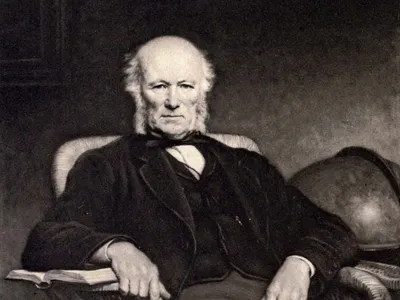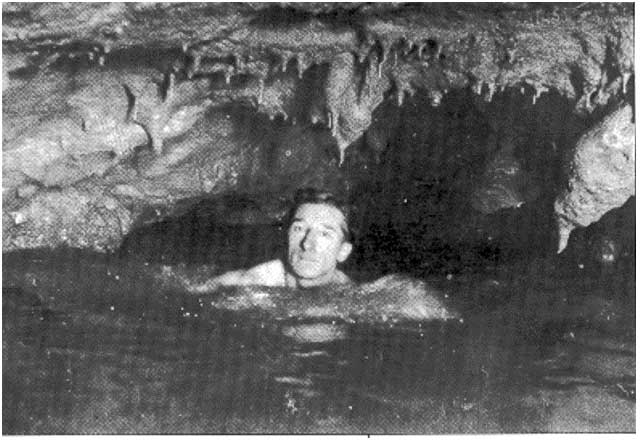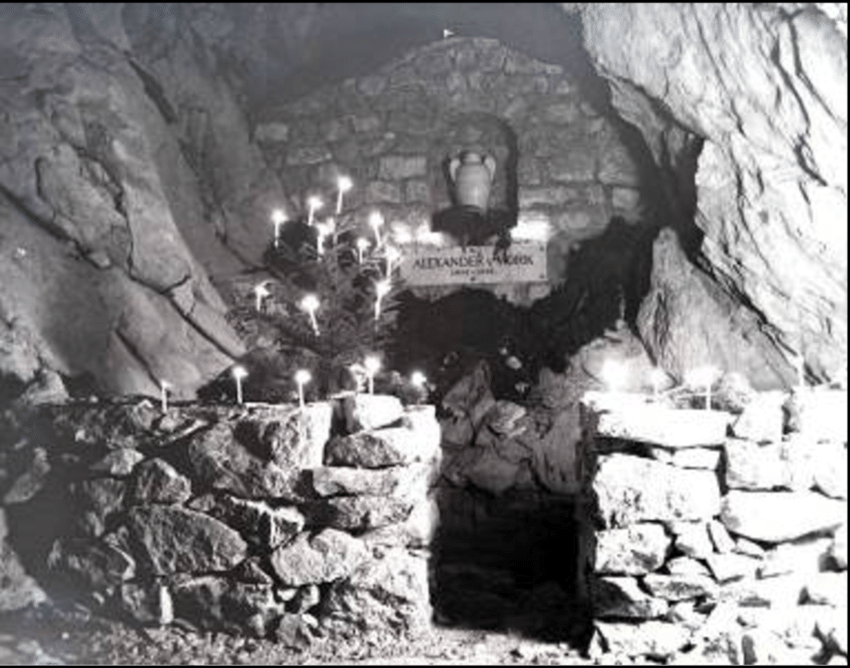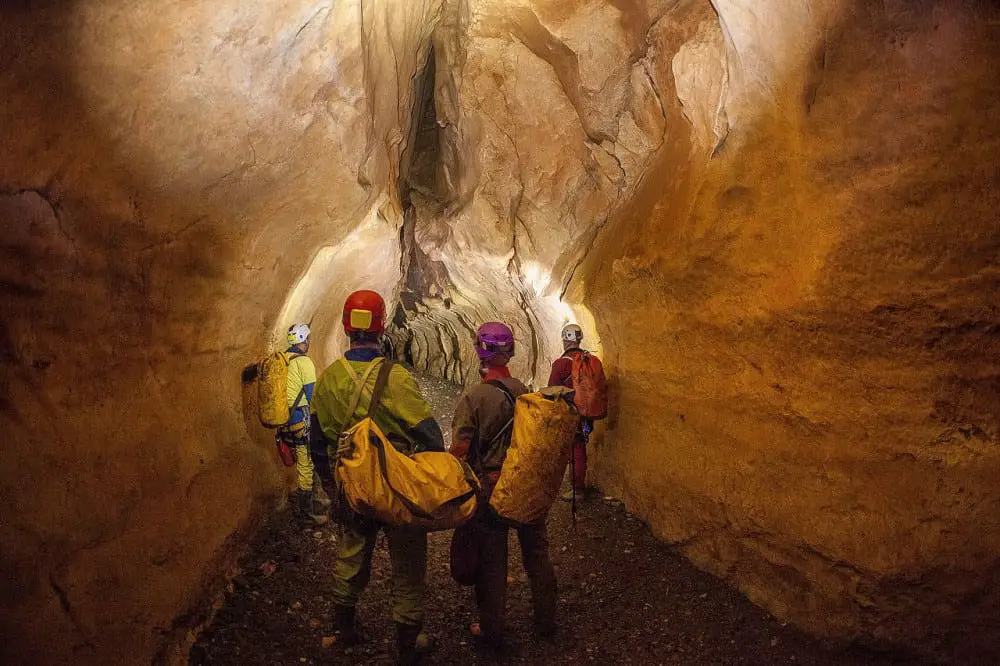Speleology, the scientific study of caves and their environments, has been a fascinating field of exploration and research for centuries. Throughout history, numerous individuals have made significant contributions to our understanding of the subterranean world, from the early pioneers who first ventured into the depths of the Earth to the modern-day scientists who continue to unravel the mysteries of these hidden realms.
In this article, we will explore the lives and achievements of the top 12 most influential speleologists in history, whose dedication and passion for caves have helped to shape our knowledge of these incredible natural wonders.
Caves have long been a source of wonder and mystery for humans, serving as shelters, sacred sites, and repositories of ancient history. However, it was not until the late 19th and early 20th centuries that the scientific study of caves, known as speleology, began to emerge as a distinct field of research. Since then, countless individuals have devoted their lives to exploring and documenting the subterranean world, from the vast underground networks of limestone caves to the deep, dark recesses of volcanic lava tubes.
The top 12 most influential speleologists in history are a diverse group of individuals, hailing from different countries and backgrounds, but all sharing a common passion for caves and a dedication to advancing our understanding of these incredible natural wonders. Some were driven by a thirst for adventure and a desire to push the boundaries of human exploration, while others were motivated by a deep fascination with the scientific mysteries of the underground world.
Each of these speleologists made significant contributions to the field, whether through their groundbreaking discoveries, their innovative research methods, or their tireless efforts to promote and protect the world’s cave systems. Their legacy lives on today, inspiring new generations of cave explorers and scientists to continue pushing the boundaries of our knowledge and understanding of the subterranean realm.
In this article, we will delve into the lives and achievements of these remarkable individuals, exploring their most significant discoveries, their pioneering research, and their lasting impact on the field of speleology. From the early pioneers who first ventured into the depths of the Earth to the modern-day scientists who continue to unravel the mysteries of the underground world, these are the top 12 most influential speleologists in history.
Édouard-Alfred Martel

Édouard-Alfred Martel (1859-1938) was a French speleologist and geographer who is widely regarded as the “father of modern speleology.” Born in Pontoise, France, Martel developed a fascination with caves at an early age and dedicated his life to exploring and documenting the subterranean world.
Martel’s most significant contribution to speleology was his pioneering use of modern surveying techniques to create detailed maps of cave systems. He was the first to use a theodolite, a precision surveying instrument, to accurately measure the dimensions and layout of caves, and his maps set a new standard for accuracy and detail in cave cartography.
Martel also made numerous groundbreaking discoveries during his career, including the exploration of the Gouffre de Padirac, a vast underground cavern in southern France, and the mapping of the Marble Arch cave system in Ireland. He wrote extensively about his discoveries and theories, publishing over 1,000 articles and 20 books on speleology and related topics.
In addition to his scientific contributions, Martel was also a tireless advocate for the protection and preservation of caves. He founded the Société de Spéléologie, the world’s first speleological society, in 1895, and worked to promote the study and conservation of caves throughout his life.
William Pengelly

William Pengelly (1812-1894) was a British geologist and speleologist who made significant contributions to the study of caves and their role in human history. Born in East Looe, Cornwall, Pengelly developed an early interest in geology and spent much of his life exploring the caves of Devon and Cornwall.
Pengelly’s most significant discovery came in 1858, when he excavated the Brixham Cave in Devon and uncovered evidence of human habitation dating back to the Upper Paleolithic period. The discovery was a major milestone in the study of human prehistory, providing the first conclusive evidence that humans had lived in Britain during the Ice Age.
Pengelly went on to excavate several other important cave sites, including Kent’s Cavern in Torquay, where he uncovered further evidence of early human habitation. He also made significant contributions to the study of cave geology and hydrology, and was a key figure in the development of speleology as a scientific discipline.
In addition to his scientific work, Pengelly was a passionate advocate for the conservation of caves and their environments. He played a key role in the establishment of the Torquay Natural History Society, which worked to protect and preserve the caves of Devon and Cornwall, and was a vocal opponent of the destruction of cave systems for commercial or industrial purposes.
Norbert Casteret

Norbert Casteret (1897-1987) was a French speleologist and explorer who is best known for his groundbreaking explorations of the caves of the Pyrenees mountains. Born in Saint-Martory, France, Casteret developed a passion for caving at an early age and spent much of his life exploring the vast underground networks of the Pyrenees.
Casteret’s most significant discovery came in 1922, when he explored the Gouffre de la Pierre Saint-Martin, a deep cave system on the border between France and Spain. Casteret descended over 1,000 feet (300 meters) into the cave, setting a new world record for the deepest cave descent and opening up a new era of deep cave exploration.
Casteret went on to explore and map numerous other cave systems in the Pyrenees, including the Gouffre Martel and the Gouffre de la Henne Morte. He also made significant contributions to the study of cave biology, collecting and describing many new species of cave-dwelling animals.
In addition to his scientific work, Casteret was a prolific writer and popularizer of speleology. He wrote numerous books and articles about his explorations and discoveries, and his vivid descriptions of the beauty and danger of the underground world helped to inspire a new generation of cave explorers.
Alexander von Mörk

Alexander von Mörk (1887-1914) was an Austrian speleologist and pioneer of cave diving. Born in Vienna, Austria, von Mörk developed an early fascination with caves and spent much of his short life exploring the underwater cave systems of Europe.
Von Mörk’s most significant contribution to speleology was his pioneering use of diving equipment to explore underwater caves. In 1908, he became the first person to use a diving helmet to explore a submerged cave, descending into the Lurgrotte cave system in Austria and discovering a vast underwater network of passages and chambers.
Von Mörk went on to explore numerous other underwater caves throughout Europe, including the Pozo Azul in Spain and the Krizna Jama in Slovenia. He also made significant contributions to the development of cave diving techniques and equipment, designing and building his own specialized diving gear.
Tragically, von Mörk’s life was cut short in 1914, when he died in a diving accident while exploring a cave in France. Despite his untimely death, his legacy lives on as one of the pioneers of underwater cave exploration and a key figure in the development of modern speleology.
Floyd Collins

Floyd Collins (1887-1925) was an American cave explorer and one of the most famous figures in the history of speleology. Born in Auburn, Kentucky, Collins spent much of his life exploring the vast limestone cave systems of central Kentucky, including the famous Mammoth Cave.
Collins’ most famous expedition took place in 1925, when he became trapped in a narrow passageway of the Sand Cave while attempting to find a new entrance to the Mammoth Cave system. Despite extensive rescue efforts, Collins died after being trapped for more than two weeks, and his story became a national sensation, inspiring numerous books, articles, and even a musical.
Although Collins is best known for his tragic end, he made significant contributions to the exploration and mapping of the Kentucky cave systems during his lifetime. He discovered several new passages and chambers in the Mammoth Cave system, including the Crystal Cave and the Great Crystal Cave, and his detailed maps and descriptions of the caves helped to establish Mammoth Cave as one of the most famous and extensively explored cave systems in the world.
Collins’ legacy lives on as a symbol of the dangers and challenges of cave exploration, and as a reminder of the bravery and determination of the early pioneers of speleology.
Michel Siffre

Michel Siffre (born 1939) is a French speleologist and chronobiologist who is best known for his groundbreaking studies of the effects of isolation and darkness on the human body and mind. Born in Nice, France, Siffre began exploring caves as a teenager and quickly became fascinated by the psychological and physiological effects of spending extended periods of time underground.
In 1962, Siffre conducted his most famous experiment, spending two months living alone in a cave in the French Alps with no access to natural light or outside communication. During his time in the cave, Siffre studied the effects of isolation and sensory deprivation on his own body and mind, and his findings helped to establish the field of chronobiology, the study of biological rhythms and their effects on human health and behavior.
Siffre went on to conduct several other long-term isolation experiments in caves, including a six-month stay in a cave in Texas in 1972. His work helped to shed light on the importance of natural light and social interaction for maintaining physical and mental health, and his findings have had significant implications for fields ranging from space exploration to the treatment of sleep disorders.
In addition to his scientific work, Siffre has been a passionate advocate for the protection and preservation of caves and their environments. He has worked to raise awareness of the importance of caves as natural and cultural treasures, and has been involved in numerous conservation efforts throughout his career.
Sheck Exley

Sheck Exley (1949-1994) was an American cave diver and explorer who is widely regarded as one of the greatest underwater cave explorers of all time. Born in Jacksonville, Florida, Exley began diving in the caves of north Florida as a teenager and quickly became one of the most skilled and experienced cave divers in the world.
Exley’s most significant contribution to speleology was his pioneering exploration of deep underwater caves, including the Wakulla Springs cave system in Florida, which he explored to a depth of over 300 feet (91 meters). He also made significant discoveries in other deep cave systems around the world, including the Huautla cave system in Mexico and the Bushmansgat cave system in South Africa.
Exley was a passionate advocate for cave conservation and safety, and he played a key role in the development of modern cave diving techniques and equipment. He was a founding member of the Cave Diving Section of the National Speleological Society, and he worked tirelessly to promote safe and responsible cave diving practices.
Tragically, Exley died in a diving accident in 1994 while attempting to explore a deep underwater cave in Mexico. Despite his untimely death, his legacy lives on as one of the greatest underwater cave explorers of all time, and his contributions to the field of speleology continue to inspire new generations of cave divers and explorers.
Bill Stone

Bill Stone (born 1952) is an American engineer, speleologist, and explorer who is best known for his pioneering work in the field of underwater cave exploration. Born in Pennsylvania, Stone began exploring caves as a teenager and quickly became one of the world’s leading experts on underwater cave systems.
Stone’s most significant contribution to speleology was his development of advanced diving technologies and techniques for exploring deep underwater caves. In 1987, he led a team of divers to explore the Huautla cave system in Mexico, setting a new world record for the deepest underwater cave dive at a depth of over 870 feet (265 meters).
Stone has also been a key figure in the development of autonomous underwater vehicles (AUVs) for cave exploration, and his work has helped to open up new frontiers in the study of subterranean environments. He has led numerous expeditions to explore deep underwater caves around the world, including the Wakulla Springs cave system in Florida and the Sistema Sac Actun cave system in Mexico.
In addition to his scientific work, Stone has been a passionate advocate for cave conservation and education. He has worked to raise awareness of the importance of protecting underwater cave systems and their unique ecosystems, and he has been involved in numerous conservation efforts throughout his career.
Andrew Eavis

Andrew Eavis (born 1946) is a British speleologist and explorer who is best known for his extensive explorations of cave systems in Southeast Asia. Born in Yorkshire, England, Eavis began exploring caves as a teenager and quickly became one of the world’s leading experts on the caves of Malaysia and Indonesia.
Eavis’s most significant contribution to speleology was his discovery and exploration of the Mulu cave system in Sarawak, Malaysia. In 1978, he led an expedition to explore the caves of Mulu, and his team discovered the Sarawak Chamber, which at the time was the largest known underground chamber in the world, with a volume of over 50 million cubic feet (1.4 million cubic meters).
Eavis went on to lead numerous other expeditions to explore the caves of Southeast Asia, including the Clearwater Cave system in Sarawak and the Hang Son Doong cave system in Vietnam, which is currently the largest known cave in the world. He has also made significant contributions to the study of cave geology and hydrology, and his work has helped to shed light on the unique geological and ecological processes that shape these incredible underground environments.
In addition to his scientific work, Eavis has been a passionate advocate for cave conservation and sustainable tourism. He has worked to promote responsible cave exploration and management practices, and has been involved in numerous conservation efforts throughout his career.
Véronique Le Guern

Véronique Le Guern (born 1957) is a French speleologist and geographer who is best known for her pioneering work in the study of cave microclimates and their effects on cave art and archaeological sites. Born in Paris, France, Le Guern began exploring caves as a student and quickly became fascinated by the complex interactions between caves, their environments, and human activities.
Le Guern’s most significant contribution to speleology was her development of new techniques for monitoring and analyzing cave microclimates, including temperature, humidity, and air flow patterns. Her work has helped to shed light on the ways in which changes in cave environments can affect the preservation of cave art and archaeological sites, and has contributed to the development of new strategies for protecting these valuable cultural and scientific resources.
Le Guern has conducted extensive research in caves throughout Europe and Asia, including the famous Lascaux Cave in France, where she has studied the effects of human activities on the delicate cave environment. She has also been a key figure in the development of international collaborations and partnerships for cave research and conservation.
In addition to her scientific work, Le Guern has been a passionate advocate for cave education and outreach. She has worked to promote public understanding of the importance of caves and their environments, and has been involved in numerous educational and community engagement initiatives throughout her career.
Conclusion
The top 12 most influential speleologists in history have made incredible contributions to our understanding of the subterranean world and the complex processes that shape these hidden landscapes. From the early pioneers who first ventured into the depths of the Earth to the modern-day scientists who continue to push the boundaries of cave exploration and research, these individuals have dedicated their lives to unlocking the secrets of the underground realm.
Through their groundbreaking discoveries, innovative research methods, and tireless efforts to promote cave conservation and education, these speleologists have helped to establish speleology as a vital scientific discipline and have inspired countless others to explore the incredible beauty and diversity of the world’s caves.
As we continue to study and explore these incredible underground environments, it is important to remember the contributions of these pioneering speleologists and to build upon their legacy of scientific discovery and environmental stewardship. By working to protect and preserve these fragile and irreplaceable landscapes, we can ensure that future generations will have the opportunity to experience the wonder and mystery of the subterranean world for themselves.
So let us celebrate the lives and achievements of these remarkable individuals, and let us continue to support the vital work of speleologists around the world as they seek to unravel the secrets of the Earth’s incredible underground landscapes. For it is through their tireless efforts and unwavering dedication that we can truly begin to understand and appreciate the incredible complexity and beauty of the world beneath our feet.

